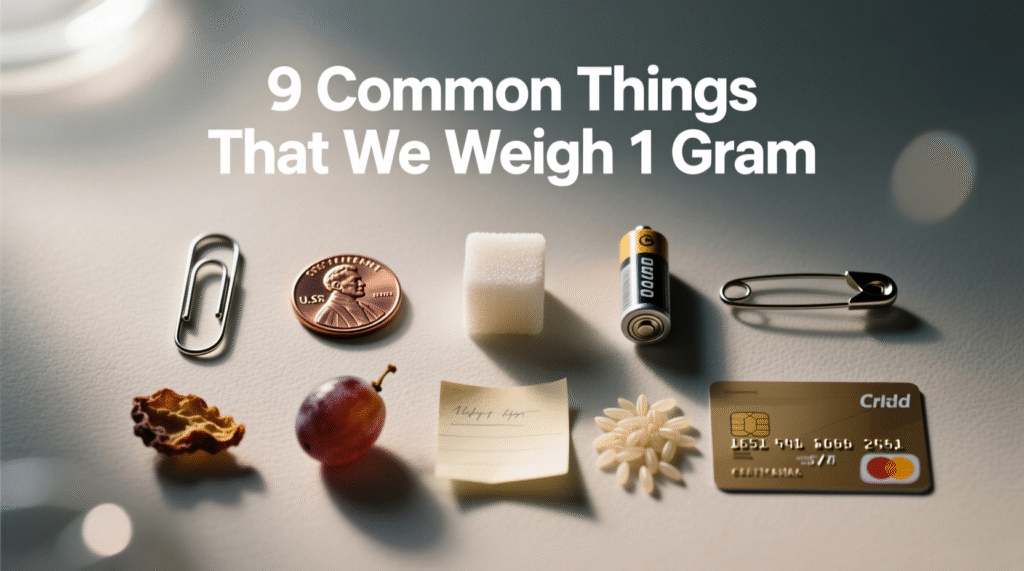You are following a recipe that calls for “just a pinch” of saffron, or you’re trying to measure medication for your pet, and suddenly you realize how crucial it is to understand tiny measurements. In our world of smartphones that weigh hundreds of grams and coffee cups that tip the scales at even more, the humble gram often gets overlooked. Yet this seemingly insignificant unit of measurement plays a vital role in everything from cooking and crafting to science and medicine.
The gram, originally defined as the mass of one cubic centimeter of water at its maximum density, represents precision in its purest form. While we easily visualize a kilogram as a bag of sugar or a pound as a loaf of bread, understanding what exactly weighs one gram can transform how we approach detailed work, whether we’re portioning spices, measuring jewelry, or simply satisfying our curiosity about the weight of everyday objects.
How Heavy is 1 Gram Compared to Common Objects?
One gram represents an incredibly light weight that most people struggle to visualize without reference points. To put this in perspective, a single gram is roughly equivalent to the weight of a standard paperclip, a small raisin, or about one-fifth of a teaspoon of water. This measurement is so light that you can barely feel it in your palm, yet it’s substantial enough to be measured accurately on most digital scales. Understanding this baseline helps you develop an intuitive sense for tiny measurements that appear frequently in cooking, crafting, and scientific applications.
1. A Standard Paper Clip

The ubiquitous paper clip serves as perhaps the most reliable reference point for understanding one gram. These simple office supplies have maintained remarkably consistent weights across manufacturers, making them an unofficial standard for gram visualization.
Most standard paper clips measure approximately 50 millimeters in length and are constructed from galvanized steel wire. The consistency in their manufacturing process means that whether you grab one from a corporate office in Tokyo or a home desk in Denver, you’re likely holding something that weighs within a few tenths of a gram from the standard.
Paper clips matter because they represent precision manufacturing at scale. Despite being one of the cheapest office supplies available, they’re produced to exacting standards that have remained largely unchanged since their invention in the 1890s. This consistency makes them invaluable for quick weight estimates when you need to gauge small measurements.
Here’s something remarkable: the paper clip’s design is so efficient that NASA has used modified versions in space missions. The zero-gravity environment of space stations requires fasteners that work reliably without magnetic interference, and the simple mechanical design of paper clips has proven surprisingly adaptable to these demanding conditions.
2. A Single Raisin
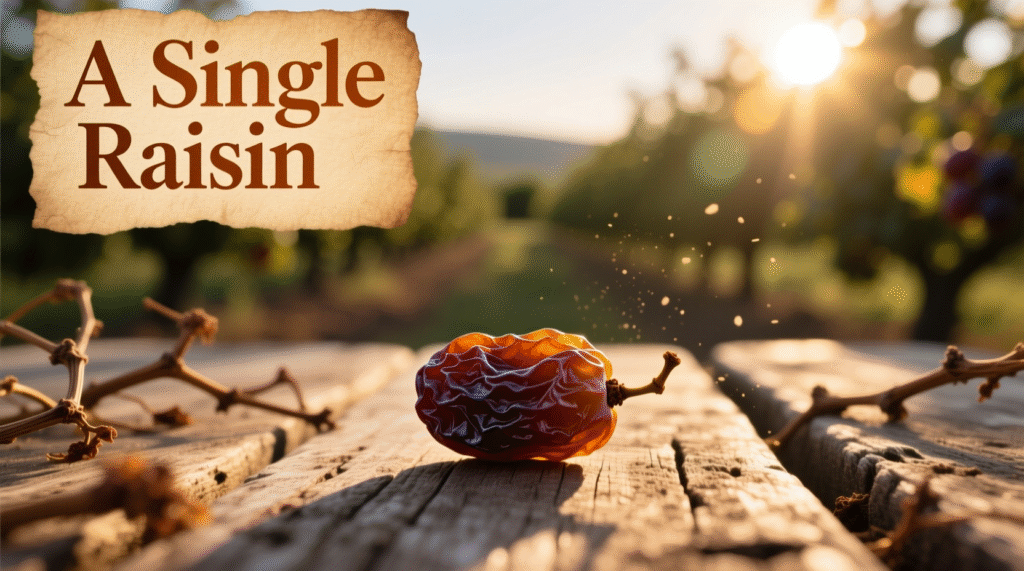
Nature provides its own gram-sized package in the form of a standard raisin. These dried grapes represent one of the most accessible ways to visualize this weight, especially since most people have encountered them in cereals, trail mixes, or baking projects.
The weight of a raisin can vary slightly depending on the grape variety and drying process, but most commercial raisins cluster tightly around the one-gram mark. Thompson seedless grapes, which produce the majority of commercial raisins, lose approximately 85% of their water content during the dehydration process, concentrating their sugars and achieving that familiar gram weight.
Understanding raisin weights becomes particularly valuable in baking and cooking, where precision can make the difference between success and disappointment. Professional bakers often use raisin counts rather than volume measurements for consistent results, knowing that roughly 150-160 standard raisins equal one cup by volume.
The concentration process that creates raisins also concentrates their nutritional content dramatically. A single gram raisin contains more antioxidants, potassium, and natural sugars than the equivalent weight of fresh grape, making these tiny packages remarkably nutrient-dense for their size.
3. A Small Thumbtack or Push Pin
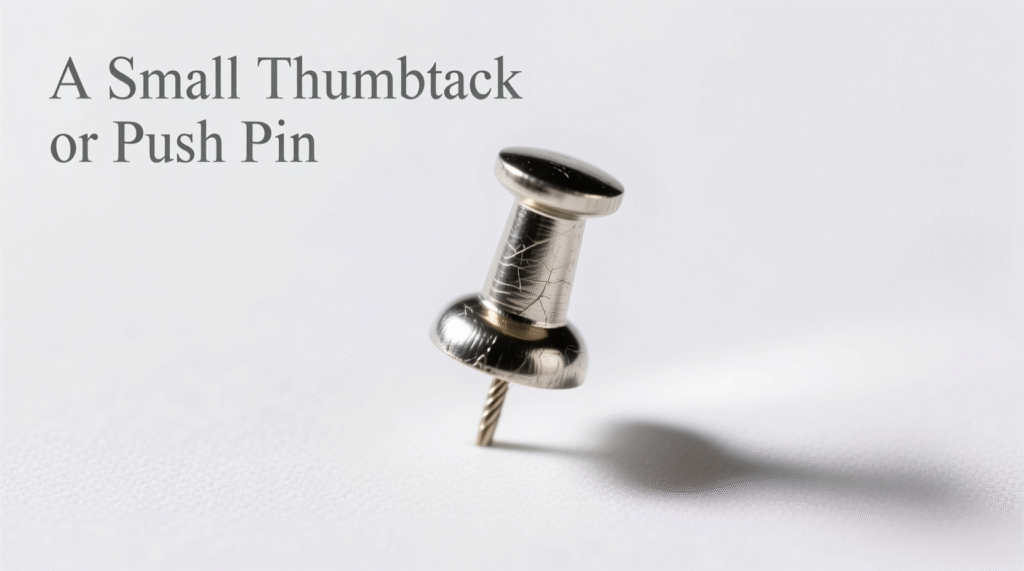
The humble thumbtack represents functional design distilled to its essence, and most standard varieties weigh remarkably close to one gram. These simple fasteners demonstrate how engineers can create maximum utility within minimal weight constraints.
Traditional thumbtacks consist of a steel pin embedded in a plastic or metal head, with the proportions carefully balanced to provide adequate grip surface while maintaining the sharp penetrating point. The weight distribution is particularly important – too heavy and they become unwieldy for delicate bulletin board work, too light and they lack the momentum needed for easy insertion.
The significance of thumbtack weight extends beyond office organization into fields like cartography and presentation design. Map makers and architects often calculate thumbtack quantities by weight rather than count when planning large installations, knowing that consistent one-gram weights allow for accurate material estimation.
Modern thumbtacks have evolved to include colored varieties and specialized designs, but manufacturers maintain the traditional weight standard because it represents the optimal balance between functionality and material efficiency. Some high-end varieties incorporate ergonomic improvements, but even these innovations rarely deviate more than 0.2 grams from the traditional standard.
4. A Standard Staple

The office staple might seem insignificant, but it represents precision engineering on a microscopic scale. Standard 26/6 staples – the most common variety used in typical staplers – weigh almost exactly one gram each.
These tiny fasteners are manufactured from galvanized steel wire that’s cut, bent, and sharpened in automated processes that can produce millions per hour. The consistency required to maintain the one-gram standard while ensuring each staple can penetrate paper cleanly and hold securely demonstrates remarkable manufacturing precision.
Staples matter in industries far beyond office work. Medical staplers use specialized versions for surgical procedures, and construction applications employ heavy-duty varieties that can weigh significantly more. However, the standard office staple remains the baseline against which other varieties are measured.
The environmental impact of staples has led to interesting innovations in recent years. Some manufacturers now produce staplers that can fasten papers without using metal staples at all, cutting and folding the paper itself. Yet the traditional one-gram metal staple remains popular because of its reliability and the satisfying tactile feedback it provides during use.
5. A Small Button
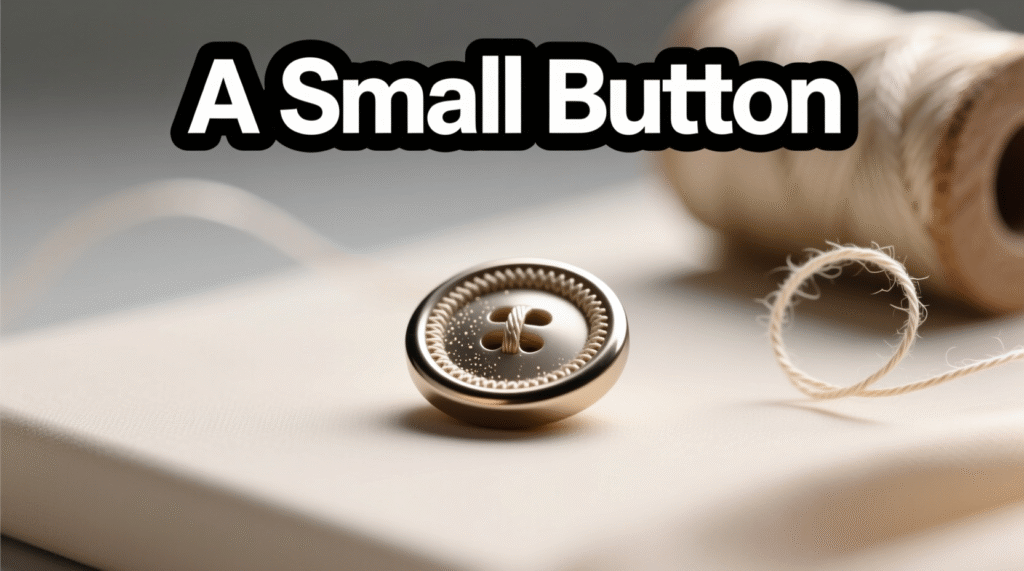
Buttons represent one of humanity’s oldest fastening technologies, and many common shirt buttons weigh within a few tenths of a gram. The consistency of button weights across different materials and manufacturing processes makes them useful reference points for gram measurement.
Standard plastic shirt buttons typically measure 10-15 millimeters in diameter and achieve their one-gram weight through careful material selection and thickness optimization. Manufacturers must balance durability requirements with aesthetic considerations while maintaining cost-effectiveness, making the one-gram standard button a marvel of industrial design.
The weight consistency becomes particularly important in garment manufacturing, where designers calculate button quantities by weight for inventory management and shipping calculations. A standard dress shirt uses approximately 7-9 grams worth of buttons, making individual button weight a crucial factor in overall garment specifications.
Button collecting, or phillumeny, has revealed fascinating variations in materials and manufacturing techniques throughout history. Antique buttons made from natural materials like bone, wood, or shell often weigh differently than modern synthetic versions, providing collectors with tactile clues about manufacturing dates and origins.
6. A Single Cheerio or Similar Cereal Piece
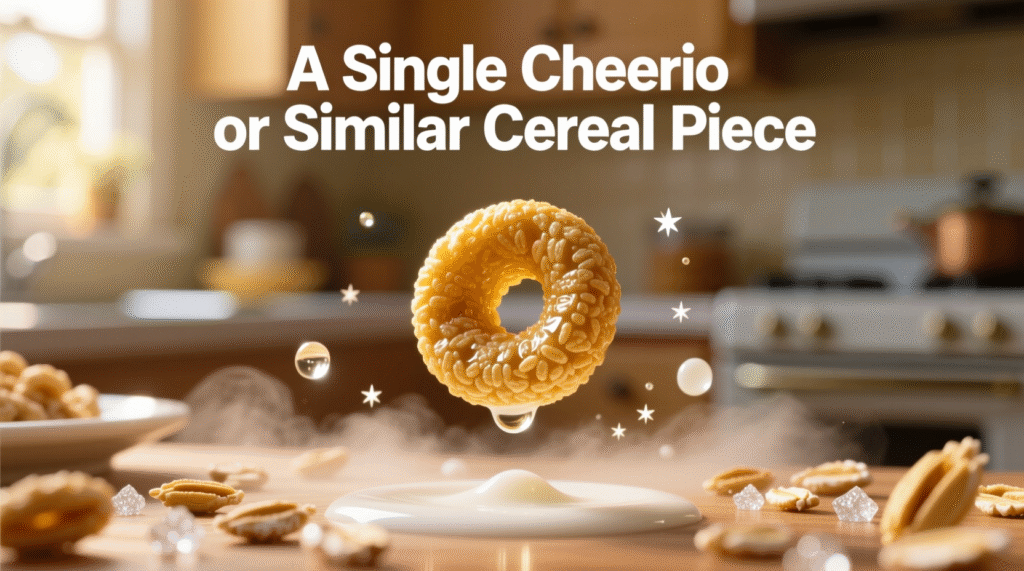
The breakfast table provides another excellent reference point for gram measurement in the form of individual cereal pieces. A single Cheerio, perhaps America’s most recognizable breakfast cereal, weighs approximately one gram.
These ring-shaped pieces are manufactured to precise specifications that ensure consistent texture, flavor, and nutritional content. The extrusion and toasting process that creates Cheerios must carefully control moisture content and density to achieve the familiar light, crunchy texture while maintaining the standard weight.
The significance of individual cereal piece weights extends into nutritional planning and portion control. Registered dietitians often use piece counts rather than volume measurements when helping clients understand appropriate serving sizes, knowing that standardized weights provide more accurate nutritional calculations.
Manufacturing Cheerios and similar cereals requires sophisticated quality control systems that monitor individual piece weights throughout production. Variations outside acceptable ranges can indicate problems with moisture control, ingredient mixing, or processing temperatures, making weight consistency a key indicator of overall product quality.
7. A Standard Pen Cap

The simple pen cap represents thoughtful design optimization, with most standard ballpoint pen caps weighing very close to one gram. This consistency across manufacturers reflects both practical considerations and aesthetic preferences that have evolved over decades.
Pen caps must balance multiple functions: protecting the pen tip, preventing ink from drying out, providing a comfortable grip extension when posted on the pen’s end, and avoiding becoming a choking hazard. Achieving all these requirements while maintaining the one-gram weight standard demonstrates sophisticated engineering.
The weight of pen caps becomes important in professional settings where pen comfort and balance affect productivity. Writers, artists, and office workers who use pens for extended periods often develop preferences based on the subtle weight differences created by different cap designs and materials.
Safety regulations have significantly influenced pen cap design in recent decades. Most modern caps include ventilation holes or clips designed to prevent choking hazards, but these safety features must be incorporated without significantly altering the traditional weight that users expect from their writing instruments.
8. A Small Coin (Depending on Currency)

Currency provides some of the most standardized examples of one-gram objects, though this varies significantly by country and denomination. Several coins from around the world hover near the one-gram mark, making them useful international reference points.
The U.S. dime, weighing 2.268 grams, is slightly heavier than our target, but many international coins hit closer to the mark. The precision required in coin manufacturing ensures consistent weights within very tight tolerances, making currency an excellent reference for understanding standardized measurements.
Coin weights carry historical significance beyond their monetary value. Changes in metal content, size, or weight often reflect economic conditions, technological advances, or shifts in government policy. The consistent one-gram standard maintained by various currencies demonstrates the importance of measurement precision in international commerce.
Numismatists – coin collectors – use weight as one of several factors in authenticating valuable coins. Counterfeit coins often fail to match original weight specifications exactly, making precise measurement a crucial tool in detecting fraudulent currency.
9. A Single Grape (Small Variety)
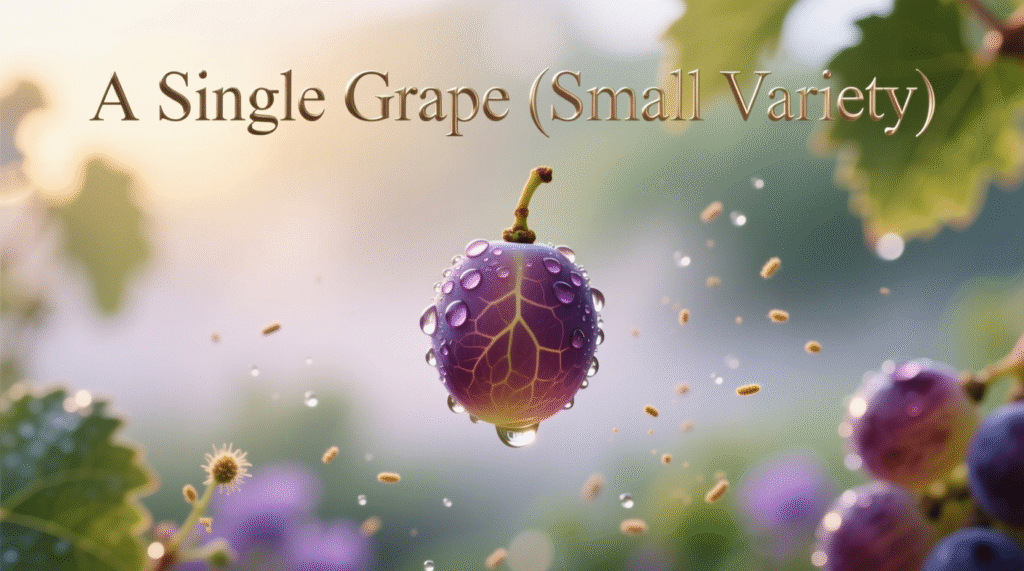
Nature’s own gram-sized package comes in the form of small grape varieties. While grape weights can vary significantly based on variety, growing conditions, and ripeness, many small table grapes weigh remarkably close to one gram each.
The consistency of grape weights within specific varieties reflects the standardization efforts of commercial agriculture. Grape growers often sort their harvest by size and weight to meet specific market requirements, with premium varieties commanding higher prices partly due to consistent sizing.
Understanding individual grape weights becomes valuable in nutritional planning and portion control. Health professionals often recommend counting grapes rather than estimating volume when calculating sugar intake or planning diabetic diets, knowing that consistent weights provide more accurate nutritional calculations.
The water content of grapes – typically around 85% – means that their weight provides a useful reference point for understanding the density of high-water-content foods. This relationship helps explain why dried grapes (raisins) weigh roughly the same despite being much smaller in size.
Real-World Applications and Measurement Tips
Understanding one-gram reference points transforms everyday situations where precise small measurements matter. In the kitchen, knowing that a paperclip weighs one gram helps you estimate spice quantities when you don’t have a scale. A “pinch” of expensive saffron might cost several dollars, making accurate measurement crucial for both flavor and budget considerations.
For jewelry making, crafting, and hobby work, visualizing one gram helps you estimate material quantities and shipping weights. Many online marketplaces charge by weight for small items, and understanding gram measurements helps you avoid surprises in shipping costs or material requirements.
When traveling internationally, knowing common one-gram reference points helps you estimate quantities when you encounter unfamiliar measurement systems or don’t have access to scales. This knowledge becomes particularly valuable when dealing with medications, precious materials, or regulated substances that have strict quantity limitations.
In educational settings, teachers use these common objects to help students develop intuitive understanding of metric measurements. Rather than memorizing abstract conversion factors, students who can visualize one gram through familiar objects develop stronger mathematical reasoning skills and better measurement estimation abilities.
Practical Tips for Estimating Without a Scale
Developing your ability to estimate one-gram quantities using common objects requires practice and awareness of variations. Start by handling known one-gram objects regularly – keep a paperclip on your desk or carry a few in your wallet as reference points.
Create your own reference collection using items you encounter frequently. Weigh various small objects on an accurate scale and note which ones cluster around the one-gram mark in your specific environment. Regional variations in manufacturing and materials can affect weights, so personal calibration improves accuracy.
Practice the “hand weight” technique by placing known one-gram objects in your palm and focusing on the sensation. With practice, you can develop surprising accuracy in estimating small weights by feel alone, though this works best for quantities larger than individual grams.
Use combination techniques for larger quantities. If you need to estimate five grams, visualize five paperclips or five raisins. This multiplication approach reduces the impact of small variations in individual objects while maintaining reasonable accuracy for practical applications.
Understanding Gram Variations and Precision
Real-world objects rarely weigh exactly one gram, and understanding typical variations helps set appropriate expectations for your estimates. Standard paperclips might range from 0.8 to 1.2 grams depending on manufacturer and wire gauge, while natural objects like grapes or raisins show even more variation.
Manufacturing tolerances explain why some mass-produced items cluster tightly around standard weights while others show more variation. Items produced for functional rather than decorative purposes often maintain tighter weight standards, making them more reliable reference points.
Moisture content significantly affects the weight of organic materials. A raisin in a humid environment might weigh slightly more than the same raisin in dry conditions, and this variation increases over time as the fruit continues to lose or gain moisture.
Temperature can also affect weights, particularly for materials that expand or contract significantly. While the effect is minimal at the one-gram scale, precision applications might require consideration of environmental factors that standard estimation techniques don’t account for.
Conclusion: Embracing Precision in Daily Life
Understanding what one gram feels like, looks like, and represents in practical terms enriches your ability to navigate situations requiring precision and accuracy. Whether you’re following a delicate recipe, measuring craft materials, or simply satisfying curiosity about the weight of everyday objects, these reference points provide valuable practical knowledge.
The objects we’ve explored – from the engineered precision of paperclips and staples to the natural consistency of raisins and small grapes – demonstrate that gram-level measurements surround us constantly. Recognizing these standards transforms abstract measurements into tangible, understandable quantities that enhance your daily problem-solving capabilities.
Consider making this knowledge practical by keeping a few reference objects handy. A paperclip in your wallet, awareness of the raisins in your morning cereal, or attention to the pen cap you use daily can provide instant measurement references when you need them most.
Challenge yourself to look around your current environment and identify potential one-gram objects. You might be surprised to discover how many items in your immediate vicinity cluster around this weight, and this awareness will serve you well in countless future situations requiring careful measurement and estimation.

James Harrington is a writer known for his compelling storytelling and diverse themes. His work blends creativity with thought-provoking ideas, captivating readers across genres. Through his website, DimensionsGo.com, he shares his latest projects, insights, and literary reflections, building a global community of readers and writers.

